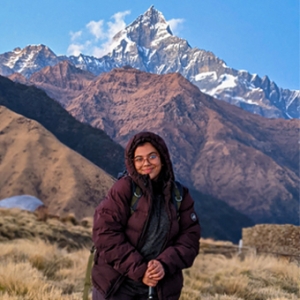Snowman Trek
The Snowman Trek is one of the world's most challenging and the most Popular Trekking Routes in Bhutan, offering an unparalleled blend of physical challenge and cultural experience. Spanning approximately 216 miles, this trek takes adventurers through some of the most remote and pristine areas of the Bhutanese Himalayas over 25 days. Trekkers navigate high-altitude passes, pristine valleys, and secluded villages, experiencing elevations ranging from 9,000 to 18,000 feet.
The journey begins in Paro, with acclimatization and a hike to the iconic Taktsang Monastery. From there, the trek starts at Drukgyel Dzong, moving through Shana to Soi Thangthangkha, and then to Jangothang, where trekkers can acclimatize and enjoy views of Jhomolhari and Jichu Drake. The route continues through high passes such as Nyele La, Gobu La, and Sinche La, with significant cultural stops in Lingshi, Chebisa, Shomuthang, and Laya villages, where trekkers can witness traditional Bhutanese lifestyles. The biodiversity encountered includes rare species like the blue poppy, snow leopards, and takins. High passes like Gangla Karchung La and Rinchenzoe La offer breathtaking views, and the journey culminates with a drive from Sephu to Punakha, then Thimphu, before returning to Paro for departure. The Snowman Trek is not just a trek; it's an epic adventure that is rewarded with unforgettable experiences and breathtaking natural beauty.
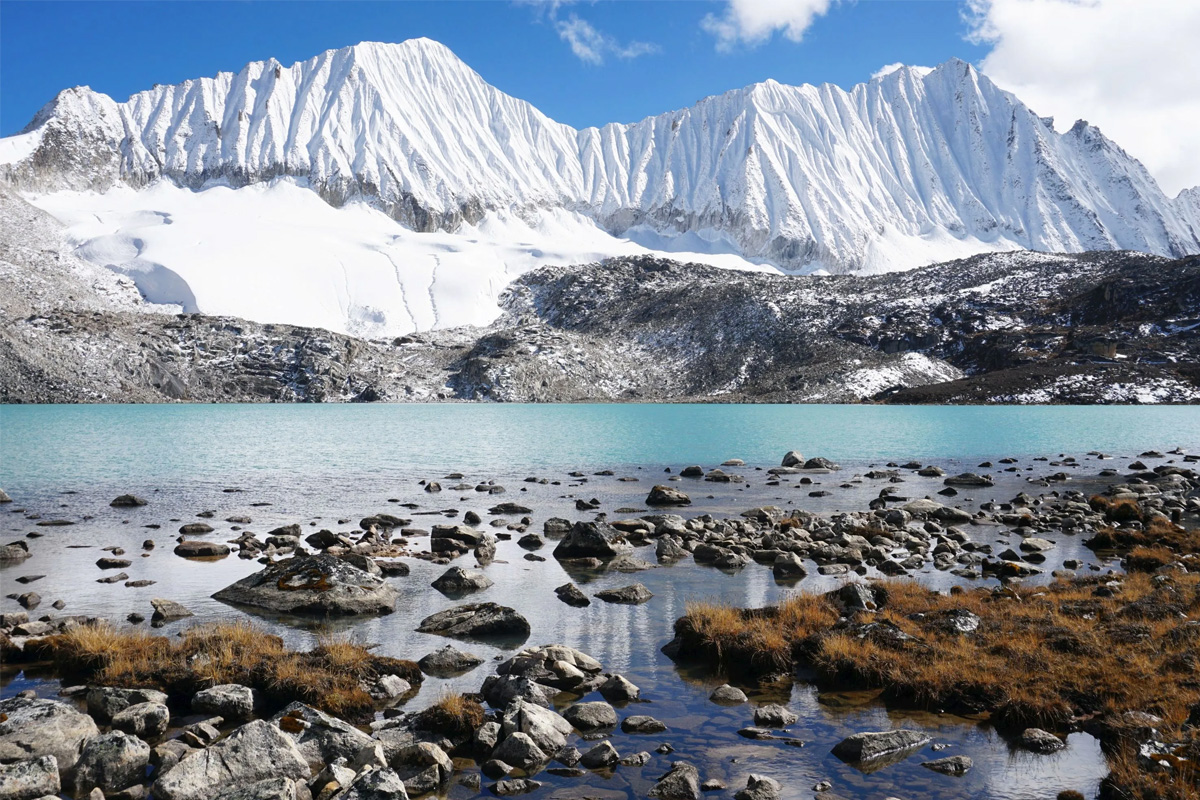
Trip Facts
- Duration of Trek: Approximately 25 days.
- Starting Point: Paro, Bhutan.
- Maximum Height: Narethang (4,900 m)
- Difficulty: Extremely challenging due to high altitude and rugged terrain.
- Best Season: Late spring (April to June) and autumn (September to November).
Highlights of Snowman Trek
- Trek through high-altitude passes, pristine valleys, and secluded villages, experiencing the unspoiled beauty of the Bhutanese Himalayas.
- Navigate elevations ranging from 9,000 to 18,000 feet, making this trek one of the most difficult due to its high altitudes and potential for harsh weather conditions.
- Pass through remote Bhutanese villages and witness traditional lifestyles, unique architecture, festivals, and customs, offering a deep cultural experience.
- Encounter diverse flora and fauna, including rare species such as the blue poppy (Bhutan’s national flower), snow leopards, and takins (the national animal).
- Start at Jomolhari Base Camp, visit Laya Village, and cross several high passes like the Gangla Karchung La (16,800 feet) and the Rinchenzoe La (17,500 feet), each offering breathtaking panoramic views.
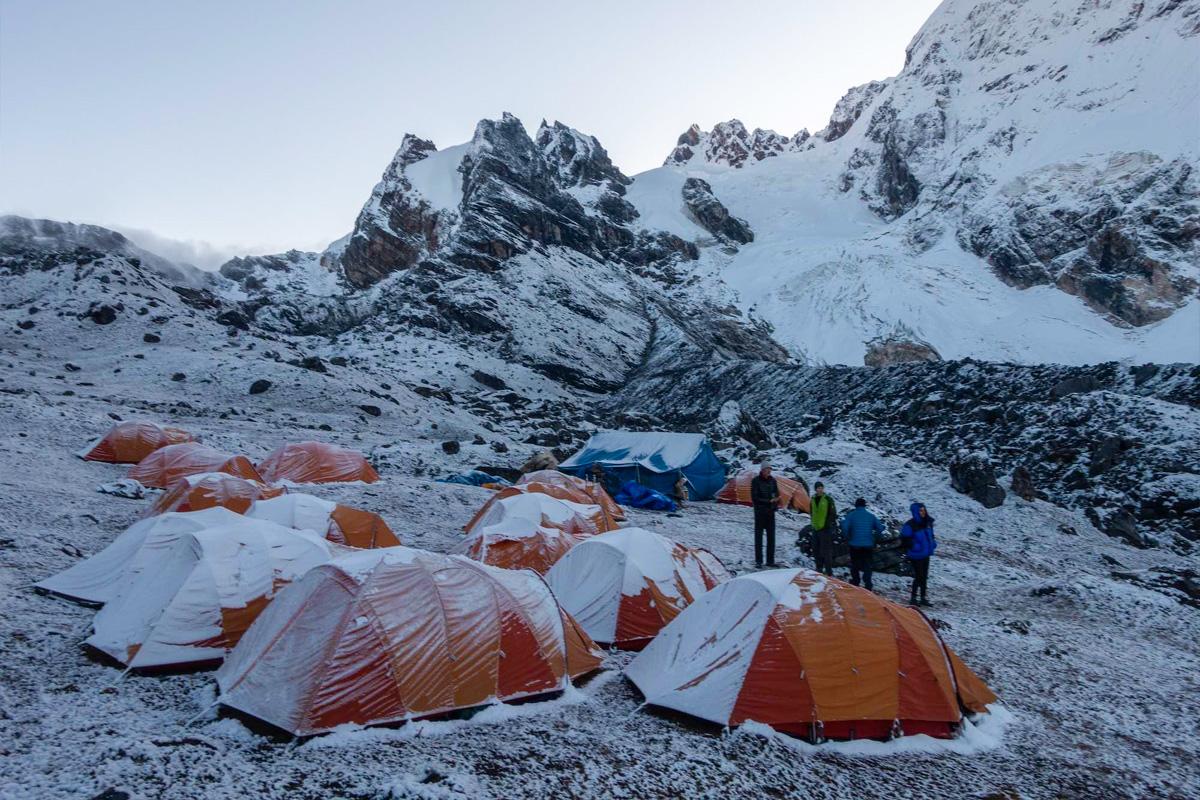
Normal Itinerary for Snowman Trek in Bhutan
Day 1: Arrival in Paro (2,200 m)
Day 2: Acclimatization in Paro (2,200 m)
Day 3: Trek from Paro to Shana (2,870 m)
Day 4: Trek from Shana to Soi Thangthangkha (3,750 m)
Day 5: Trek from Soi Thangthangkha to Jangothang (4,040 m)
Day 6: Acclimatization Day at Jangothang (4,040 m)
Day 7: Trek from Jangothang to Lingshi (4,010 m)
Day 8: Trek from Lingshi to Chebisa (3,880 m)
Day 9: Trek from Chebisa to Shomuthang (4,130 m)
Day 10: Trek from Shomuthang to Robluthang (4,160 m)
Day 11: Trek from Robluthang to Limithang (4,140 m)
Day 12: Trek from Limithang to Laya (3,850 m)
Day 13: Rest Day in Laya (3,850 m)
Day 14: Trek from Laya to Roduphu (4,160 m)
Day 15: Trek from Roduphu to Narethang (4,900 m)
Day 16: Trek from Narethang to Tarina (3,980 m)
Day 17: Trek from Tarina to Woche (3,910 m)
Day 18: Trek from Woche to Lhedi (3,800 m)
Day 19: Trek from Lhedi to Thanza (4,000 m)
Day 20: Rest Day in Thanza (4,000 m)
Day 21: Trek from Thanza to Tshorim (4,200 m)
Day 22: Trek from Tshorim to Gangkar Puensum Base Camp (4,500 m)
Day 23: Trek from Gangkar Puensum Base Camp to Geshe Woma (4,200 m)
Day 24: Trek from Geshe Woma to Sephu (3,000 m)
Day 25: Trek from Sephu to Punakha (1,300 m)
Day 26: Drive from Punakha to Thimphu (2,320 m)
Day 27: Drive from Thimphu to Paro (2,200 m)
Day 28: Departure from Paro (2,200 m)
Druk Path Trek
The Druk Path Trek is a captivating adventure through Bhutan's scenic landscapes, spanning approximately 46 miles (74 kilometers) between Paro and Thimphu. Typically completed over 4-6 days, the trek involves daily trekking hours averaging 6-8 hours. With elevation gains ranging from 2,500 to 4,200 m, it is considered moderately difficult, and suitable for trekkers with a good level of fitness. The route offers unique experiences such as traversing high-altitude passes, camping beside pristine lakes like Jimilang Tsho and Jangchulakha Tsho, and passing through traditional Bhutanese villages. Trekkers can marvel at the panoramic views of the Himalayan peaks, including Mount Gangkar Puensum. The best times to undertake the trek are during the spring (March to May) and autumn (September to November) when the weather is favorable and the skies are clear, enhancing the breathtaking scenery.
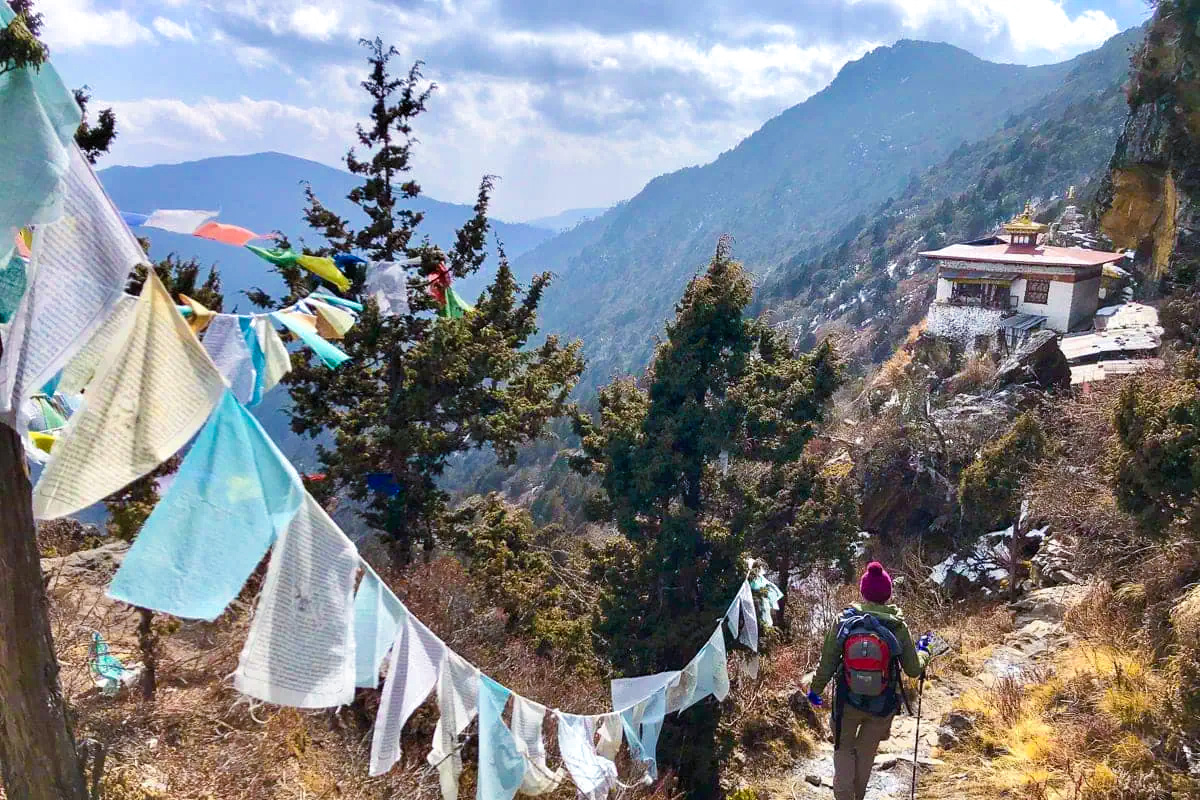
Trip Facts
- Duration of Trek: 4-6 days
- Starting Point: Paro
- Maximum Height: Phume La Pass 4,210 m (13,810 feet)
- Difficulty: Moderately difficult
- Best Season: Spring (March to May) and Autumn (September to November)
Highlights of Druk Path Trek
- Trek through serene landscapes and ancient forests, discovering the untouched beauty of the Bhutanese wilderness.
- Embark on a moderate adventure, navigating elevations ranging from 2,500 to 4,200 m, offering a perfect balance of challenge and accessibility.
- Pass through traditional Bhutanese villages along the route, providing authentic cultural encounters and insights into local lifestyles.
- Marvel at the panoramic views of the Himalayan mountain range, including the iconic Mount Gangkar Puensum, one of the world's highest unclimbed peaks.
- Camp beside picturesque lakes such as Jimilang Tsho and Jangchulakha Tsho, surrounded by tranquility and natural splendor.
- Experience the rich biodiversity of the region, with opportunities to spot wildlife like blue sheep, musk deer, and various bird species.
- Explore historic sites such as the Paro Dzong and Thimphu Dzong, showcasing Bhutan's rich architectural and religious heritage.
- Immerse yourself in the spiritual atmosphere of Buddhist monasteries and prayer flags that dot the landscape, offering moments of reflection and tranquility.
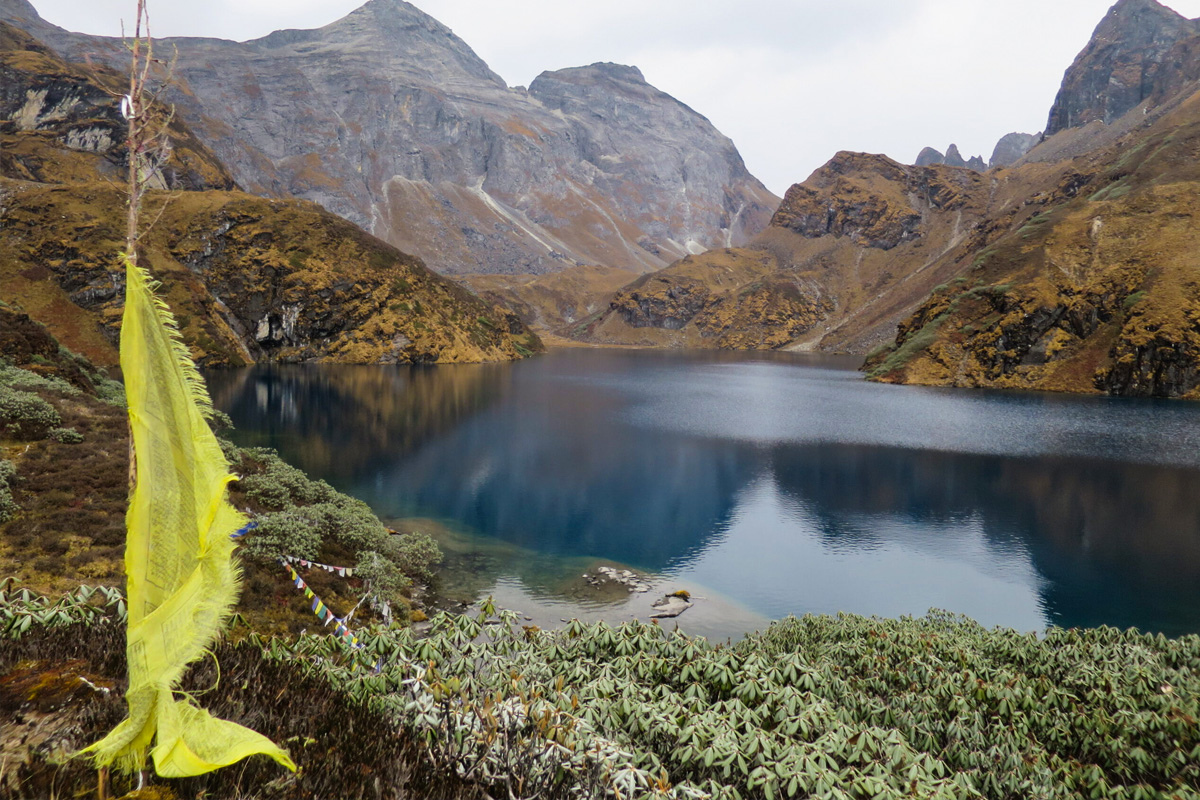
Normal Itinerary for Druk Path Trek
Day 1: Paro Arrival and City History Tour
Day 2: First Trekking Day – Ta Dzong (2,500 m) to Jili Dzong (3,500 m)
Day 3: Second Trekking Day: Jili Dzong to Jangchhu Lhakhang (3,800 m)
Day 4: Third Trekking Day: Jangchhu Lhakhang to Jimilang Tsho (3,870 m)
Day 5: Fourth Trekking Day: Jimilang Tsho to Simkotra Tsho (3,870 m)
Day 6: Fifth Trekking Day: Simkotra Tsho to Phajoding (3,700 m) via Phume la Pass (4,210 m)
Day 7: Final Trekking Day : Phajoding to Motithang (2,350 m)
Day 8: Thimphu In-Depth City Sightseeing Tour
Day 9: Bhutan Departure
Dagala Thousand Lakes Trek
The Dagala Thousand Lakes Trek is one of Bhutan's most popular and breathtaking trekking experiences. This 11-day adventure takes you through stunning mountain passes and serene forests, with elevations ranging from 2,800 m at Genekha Village to peaks as high as 4,720 m. Along the way, you'll camp beside pristine high-altitude lakes, like Uthso Tsho at 4,300 m, and enjoy spectacular views of some of the world's tallest mountains, including Mount Everest and Kanchenjunga. The trek offers unique experiences such as fishing in clear mountain lakes, watching yaks graze in lush pastures, and visiting ancient monasteries like Talakha Monastery.
The trek is called the Dagala Thousand Lakes Trek because it traverses through the Dagala region of Bhutan, which is renowned for its numerous high-altitude lakes. While the exact count may not reach a thousand, the area is known for its abundance of lakes, ranging from small, hidden tarns to larger bodies of water. These lakes dot the landscape, contributing to the trek's scenic beauty and earning it the name "Thousand Lakes Trek" as a testament to the multitude of lakes encountered along the route.
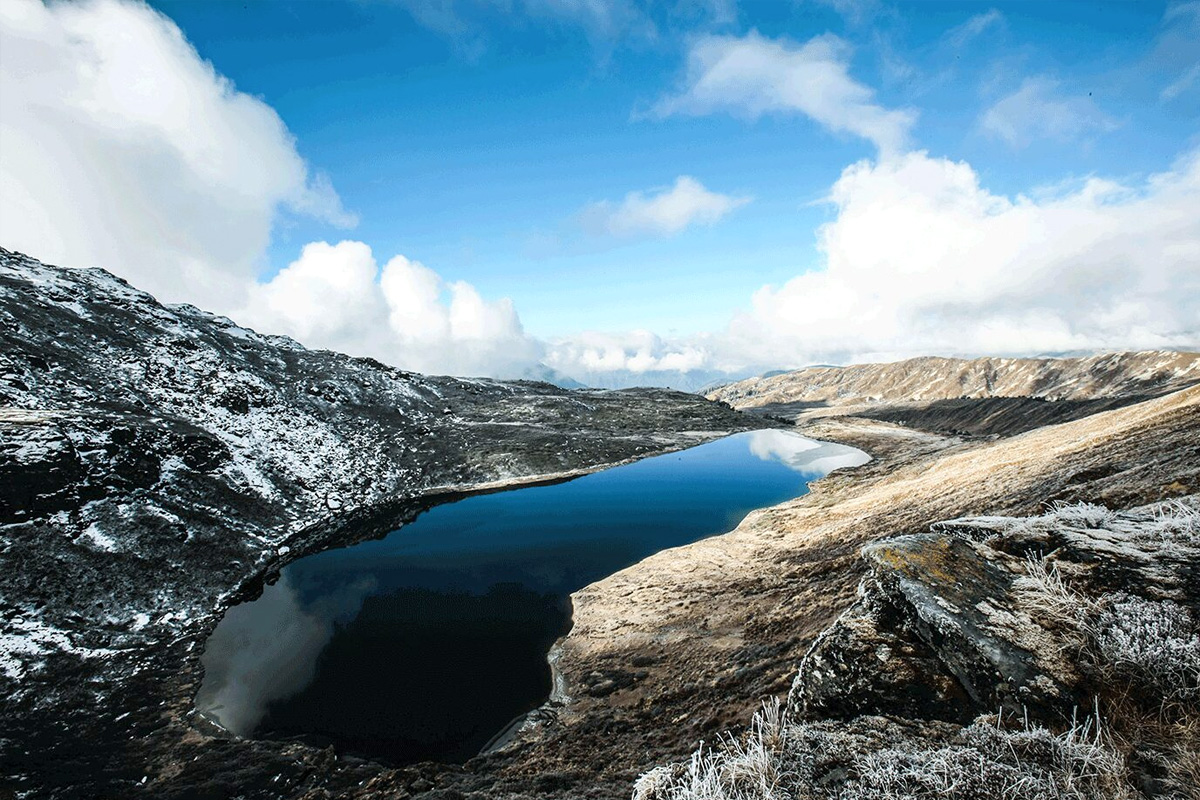
The Dagala Thousand Lakes Trek goes beyond being a simple scenic journey; it's a profound exploration of Bhutanese culture. As you traverse the rugged terrain, you're not just a spectator but an active participant in local traditions. You'll have the opportunity to engage yourself in the vibrant tapestry of Bhutanese life, from donning traditional attire to trying your hand at archery, a beloved national pastime. Amidst the trek's trials and triumphs, there are moments of respite, like the rest days where you can indulge in the comforting warmth of a traditional hot stone bath. These experiences offer physical relaxation and a deeper connection to the land and its people, enriching your journey with cultural insights and memories to cherish.
Trip Facts
- Duration of Trek: Typically 6-8 days
- Starting Point: Genekha Village
- Maximum Height: Approximately 4,300 m
- Difficulty: Moderate
- Best Season: March to May, Mid-September to November
Highlights of Dagala Thousand Lakes Trek
- Immerse yourself in the breathtaking beauty of the Himalayan landscape as you trek through rugged mountain passes and verdant forests.
- Discover the serene beauty of high-altitude lakes such as Uthso Tsho, where the shimmering waters reflect the surrounding peaks in pristine splendor.
- Enjoy panoramic vistas of iconic mountains, including Mount Everest and Kanchenjunga, from elevated vantage points along the trekking route.
- Engage in Bhutanese culture by donning traditional attire, participating in archery sessions, and witnessing vibrant cultural dances.
- Visit ancient monasteries like Talakha Monastery, where the echoes of centuries past resonate in the tranquil mountain air.
- Indulge in the soothing warmth of a traditional hot stone bath on rest days, providing relaxation and rejuvenation amidst the rugged terrain.
- Forge lasting bonds with fellow trekkers as you embark on this challenging yet rewarding journey through some of Bhutan's most stunning landscapes.
- Challenge yourself physically and mentally, gaining a sense of accomplishment and personal growth as you conquer the trek.
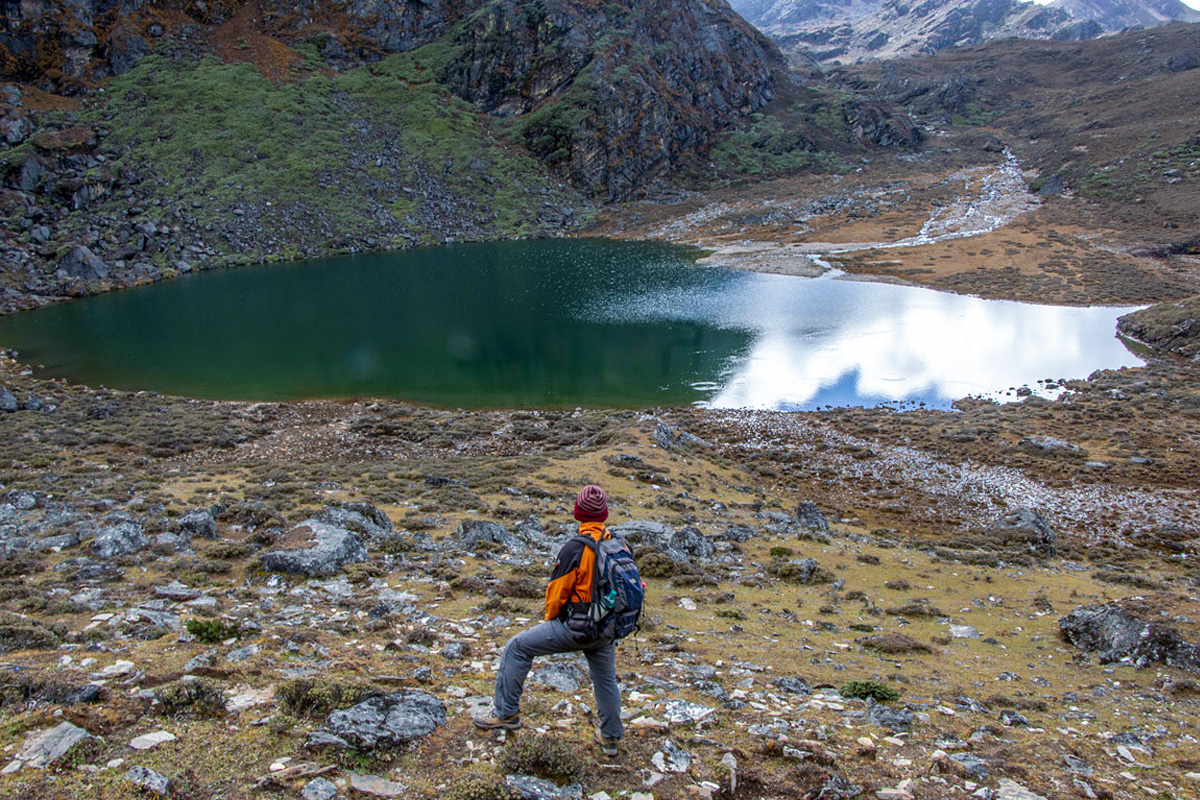
Normal Itinerary for Dagala Thousand Lakes Trek
Day 1: Paro Arrival (2,250 m) and Transfer to Thimphu 2,334 m)
Day 2: First Trekking Day – Genekha Village (2,800 m) to Gur (4,300 m)
Day 3: Second Trekking Day – Gur to Uthso Tsho (4,300 m)
Day 4: Rest Day at Uthso Tsho (4,300 m)
Day 5: Third Trekking Day – Uthso Tsho to Panka (4,050 m)
Day 6: Fourth Trekking Day – Panka to Talakha Monastery (3,650 m)
Day 7: Final Trekking Day – Talakha Monastery to Chamgang (2,500 m)
Drive to Thimphu: Chamgang to Thimphu (2,334 m)
Day 8: Thimphu to Punakha Via Dochula Pass (3,100 m)
Day 9: Transfer to Paro for Monastery Exploration
Day 10: Hike to Taktsang (Tiger Nest) Monastery (3,120 m)
Day 11: Bhutan Departure
Jomolhari Trek
The Jomolhari Trek is one of Bhutan's most popular and rewarding trekking routes, renowned for its stunning landscapes, and biodiversity. This 12-day journey begins in Paro, a picturesque town known for its traditional architecture and vibrant history. The trek covers a total distance of approximately 115 kilometers, with the highest point being the Yale-La Pass at 4,930 meters.
The trail takes trekkers through diverse terrains, including lush forests, alpine meadows, and high mountain passes, offering breathtaking views of snow-capped peaks such as Mount Jomolhari and Mount Jichu Drake. Along the way, trekkers can explore ancient monasteries, visit the ancient ruins of historic dzongs, and immerse themselves in the local culture by interacting with nomadic herders and experiencing their traditional lifestyle.
The trek is rated moderate to strenuous, making it suitable for experienced trekkers looking for both adventure and cultural enrichment. The best times to embark on this trek are during the spring (April to June) and autumn (September to November) seasons, when the weather is most favorable and the natural beauty is at its peak.
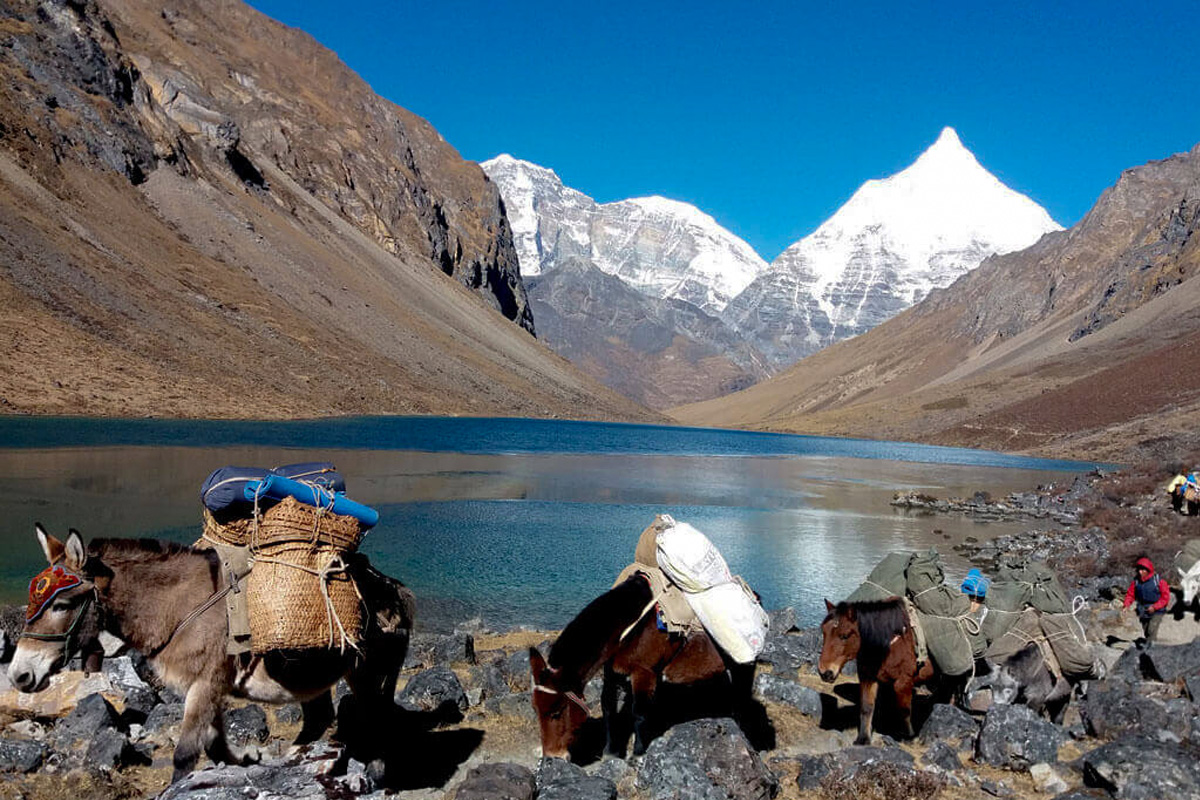
Trip Facts
- Duration of Trek: 8 Days
- Starting Point: Paro
- Maximum Height: Yale-La Pass (4,930 meters)
- Difficulty: Moderate to Strenuous
- Best Season: Spring (April to June) and Autumn (September to November)
Highlights of Jomolhari Trek Bhutan
- Traverse some of Bhutan's highest mountains with breathtaking, painting-like scenery, including views of Mounts Chomolhari and Jichu Drake.
- Visit and explore the ruins of Barshong Dzong, a historic fortress that adds a sense of adventure and history to the trek.
- Enjoy a traditional hot stone bath, a unique and rejuvenating Bhutanese experience.
- Taste traditional red rice beer, known for its unique local flavor, and experience the distinct cuisine of Bhutan.
- Opportunities to interact with local herders and learn about their traditional way of life.
- Visit significant cultural and historical sites, including Paro Dzong, the National Museum, Kyichu Temple, the National Memorial Chorten, and the Textile Museum of Bhutan.
- Hike to Taktsang (Tiger Nest) Monastery, one of Bhutan's most famous and revered religious sites, perched on the edge of a cliff.
Normal Itinerary for Jomolhari Trek
Day 1: Paro Arrival (2,250 m) and City History Tour
Day 2: First Trek Day - Sharna Zampa (2,810 m) to Thangthangkha (3,610 m)
Day 3: Second Trek Day – Thang Thang Kha to Jangothang (4,040 m)
Day 4: Short Hike around Campsite and Rest (Jangothang, 4,040 m)
Day 5: Third Trek Day – Jangothang to Lingshi (3,800 m) via Nyilila Pass (4,890 m)
Day 6: Tough Fourth Trek Day – Lingshi to Shodu (4,080 m) via Yale-La Pass (4,930 m)
Day 7: Fifth Trek Day – Shodu to Ruins of Barshong (3,700 m)
Day 8: Sixth Trek Day – Barshong to Thimphu Chu River (3,600 m)
Day 9: Final Trek Day – Thimphu Chu River to Dodena (2,600 m)
Day 10: Thimphu Sightseeing and Transfer to Paro (2,250 m)
Day 11: Hike to Taktsang (Tiger Nest) Monastery (3,120 m)
Day 12: Bhutan Departure (Paro, 2,250 m)
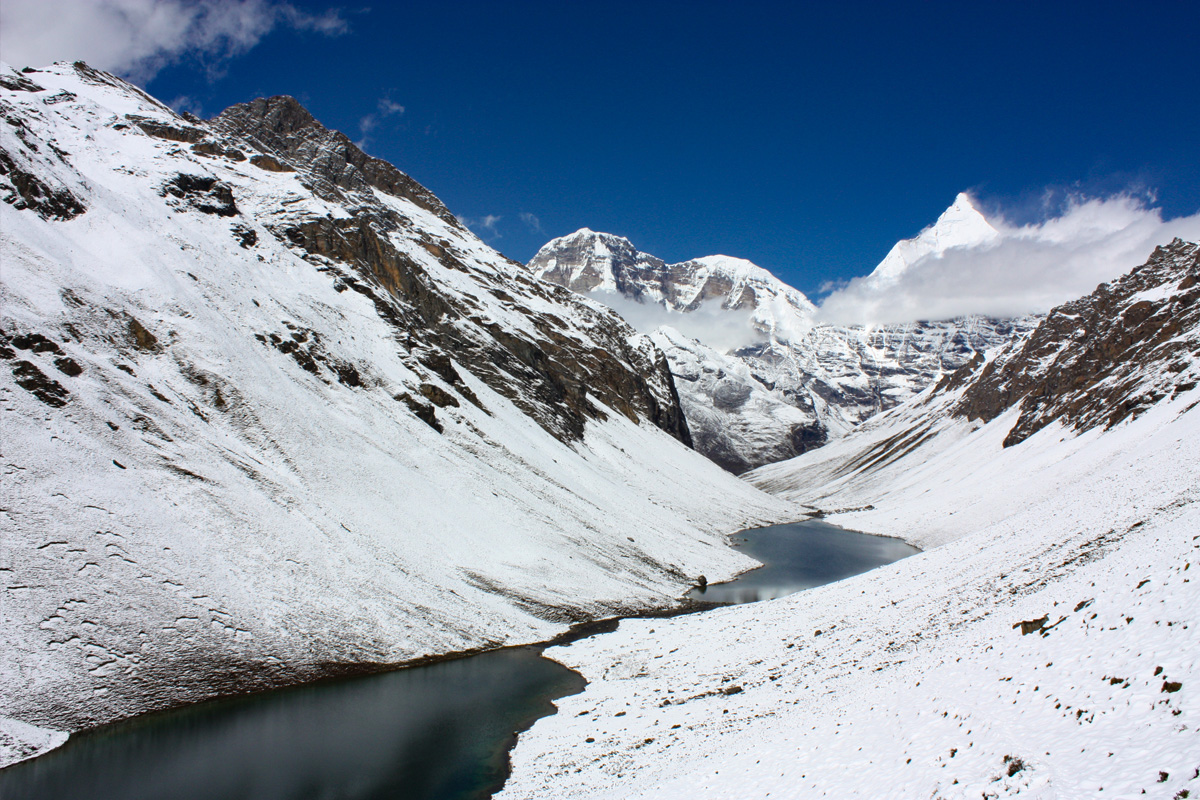
Bumthang Cultural Trek
The Bumthang Cultural Trek is a captivating journey through Bhutan's cultural heartland, spanning several days with varying trekking distances and durations. Typically, the trek covers a total distance of around 25-30 kilometers over 3-4 trek days.
Each day of the trek involves moderate hiking, with trekking times ranging from 3 to 6 hours, depending on the specific route and terrain. Trekkers start their journey early in the morning, setting out from one village or valley and making their way to the next, often traversing through dense forests, rolling meadows, and picturesque valleys along the way.
The Bumthang Cultural Trek offers a transformative journey through the heartland of Bhutan, known for its rich cultural heritage, stunning landscapes, and spiritual significance. Nestled in the central region of the country, Bumthang is a treasure trove of ancient monasteries, sacred temples, and picturesque valleys, making it an ideal destination for those seeking an authentic Bhutanese experience.
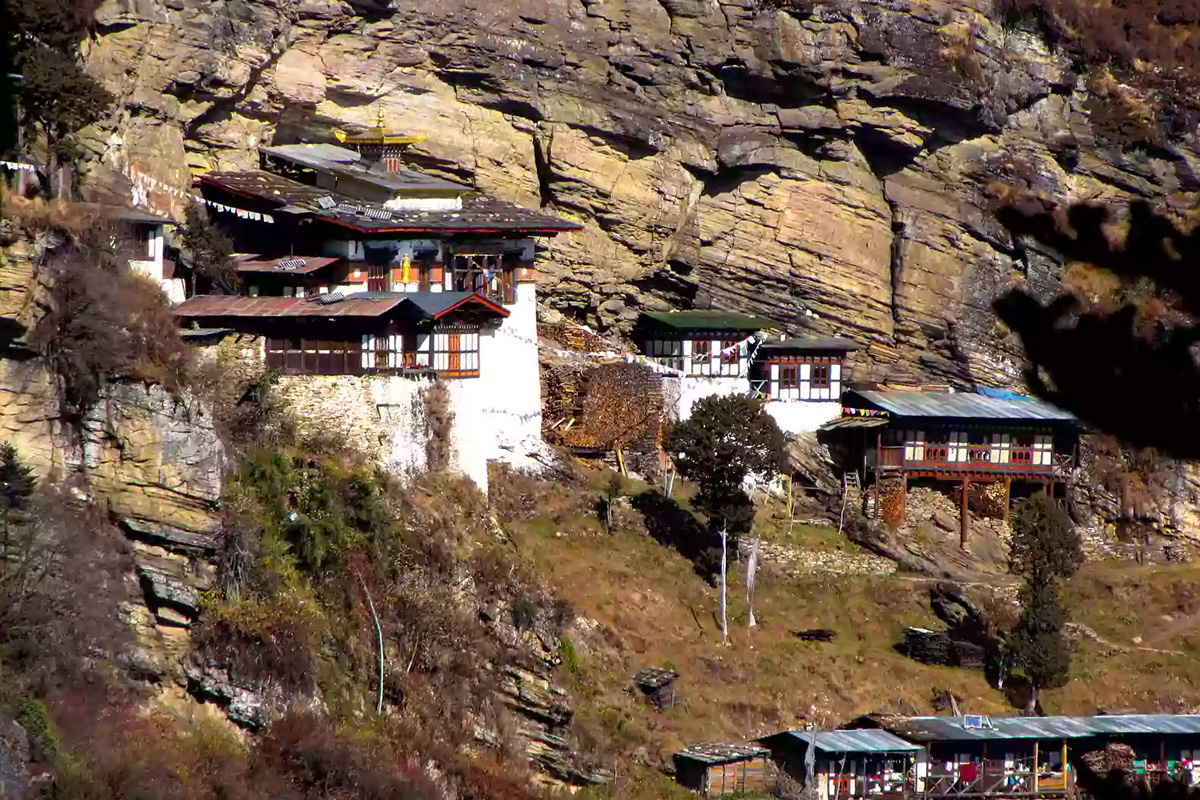
One of the highlights of the trek is the opportunity to visit ancient monasteries and temples that have stood for centuries, serving as spiritual sanctuaries for Bhutanese pilgrims. These sacred sites are steeped in legend and lore, and each holds its own significance in Bhutanese culture and religious practice.
Trip Facts
- Duration of Trek: 5-7 days
- Starting Point: Bumthang
- Maximum Height: 3,100 to 3,420 meters
- Difficulty: Moderate to moderately challenging
- Best Season: Spring (March to May) and Autumn (September to November)
Highlights of the Bumthang Cultural Trek
- Visit ancient monasteries and temples such as Jakar Dzong, Tamshing Lhakhang, Kurje Lhakhang, and Jambay Lhakhang, each offering insights into Bhutan's rich cultural and religious heritage.
- Challenge yourself as you cross high-altitude mountain passes such as Dochu-La Pass and Pele La Pass, offering panoramic views of the surrounding Himalayan landscapes and showcasing the rugged beauty of Bhutan's mountain terrain.
- Explore local markets in Thimphu and Paro, where you can sample traditional Bhutanese cuisine, shop for handicrafts and souvenirs
- Indulge in Bhutanese delicacies at local eateries and enjoy farm-to-table meals during your stay in rustic farmhouses.

Normal Itinerary for Bumthang Cultural Trek
Day 1: Arrival in Paro (2,200 m), drive to Thimphu (2,334 m).
Day 2: Thimphu (2,334 m).
Day 3: Drive from Thimphu to Trongsa (2,200 m) via Dochu-La pass (3,100 m) and Pele La pass (3,420 m).
Day 4: Trongsa, drive to Bumthang (2,600 m).
Day 5: Trek starts from Bumthang to Ngang Lhakhang (2,900 m).
Day 6: Trek from Ngang Lhakhang to Ugyen Choling (2,850 m) via Phephe La Pass (3,360 m).
Day 7: Trek from Ugyen Choling to Bumthang (2,600 m).
Day 8: Drive from Bumthang to Punakha (1,200 m).
Day 9: Drive from Punakha to Paro (2,200 m).
Day 10: Paro, Hike to Taktsang Monastery (3,120 m).
Day 11:Departure from Paro.
Merak Sakteng Trek
The Merak-Sakteng Trek stands as one of Bhutan's most popular trekking destinations, offering adventurers a unique journey through the remote and stunning landscapes of Eastern Bhutan.
Lasting approximately 6 to 7 days, this trek covers a distance of around 50 to 60 kilometers, traversing through remote valleys, high mountain passes, and traditional Bhutanese villages. Each day brings forth a new adventure, with trek durations ranging from 5 to 8 hours, depending on the terrain and altitude gains. The journey begins with a moderate ascent from Chaling to Donmong Chu, spanning roughly 8 kilometers over 5 hours.
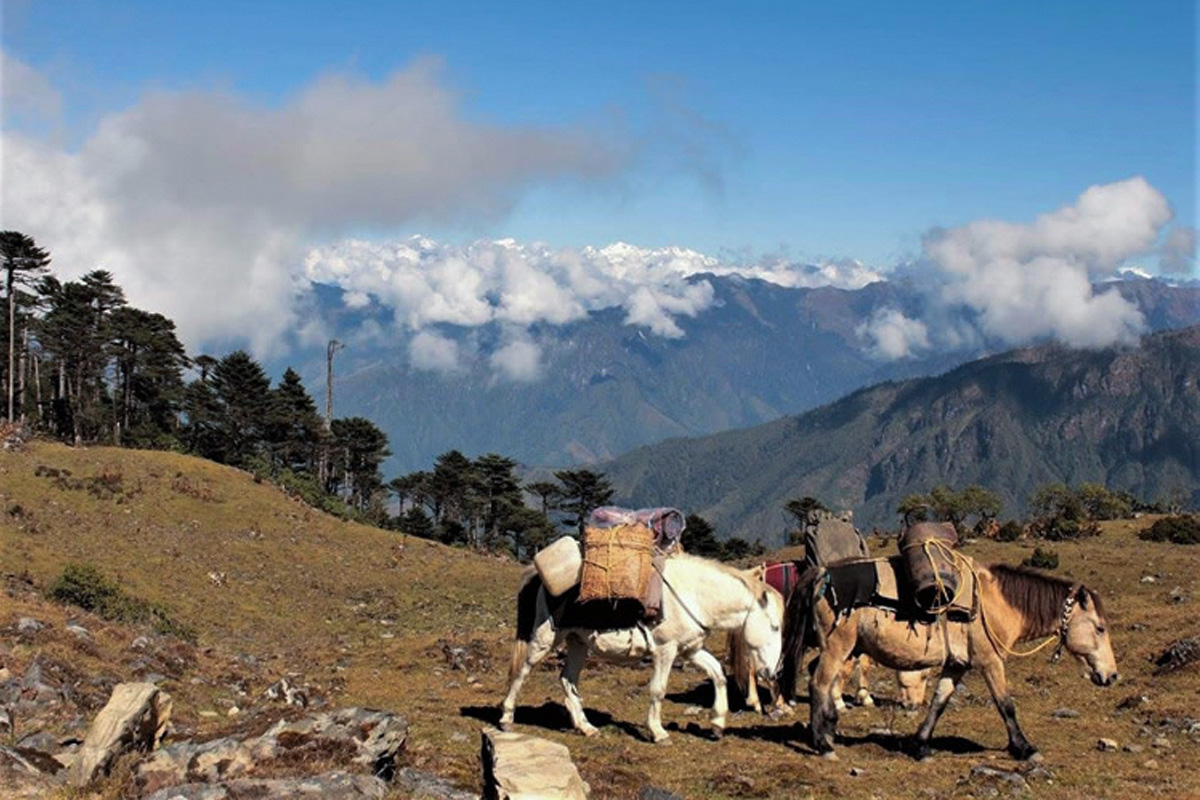
As trekkers ascend from 2,100 meters to 3,100 meters, they will be greeted by lush forests and serene streams, setting the tone for the days ahead. The second day, covering approximately 20 kilometers from Donmong Chu to Merak Village, offers an enriching cultural experience as adventurers encounter the semi-nomadic Brokpa people and immerse themselves in the traditional lifestyle of the region. Trekking onwards, the route leads through the high altitude Nachungla Pass at 4,100 meters on the third day, with trekkers descending to the campsite at Miksa Teng amidst stunning mountain vistas. Finally, the journey concludes with a descent to Sakteng on the fourth day, where trekkers can reflect on the unforgettable experiences and memories forged along the Merak-Sakteng Trek.
Trip Facts
- Duration: 6-7 days
- Starting Point: Chaling
- Maximum Height: Nachungla Pass (4,100m)
- Difficulty: Moderate
- Best Season: Spring, Autumn
Highlights of Merak Sakteng Trek
- Visiting the remote Merak Village offers a unique cultural experience, allowing travelers to learn about the traditional lifestyle of the semi-nomadic Brokpa people.
- Trekking with yaks adds to the authentic experience, while the chance to spot wildlife such as red pandas enhances the adventure.
- Crossing high-altitude passes like the Nachungla Pass (4,100 m) provides a sense of accomplishment and offers panoramic views of the surrounding mountains.
- Camping at scenic locations throughout the trek allows for unforgettable sunset and sunrise views amidst the Himalayan landscape.
- Experiencing the warm hospitality of the Bhutanese people, both through interactions with locals and the services provided by guides and staff, enhances the overall trekking experience.
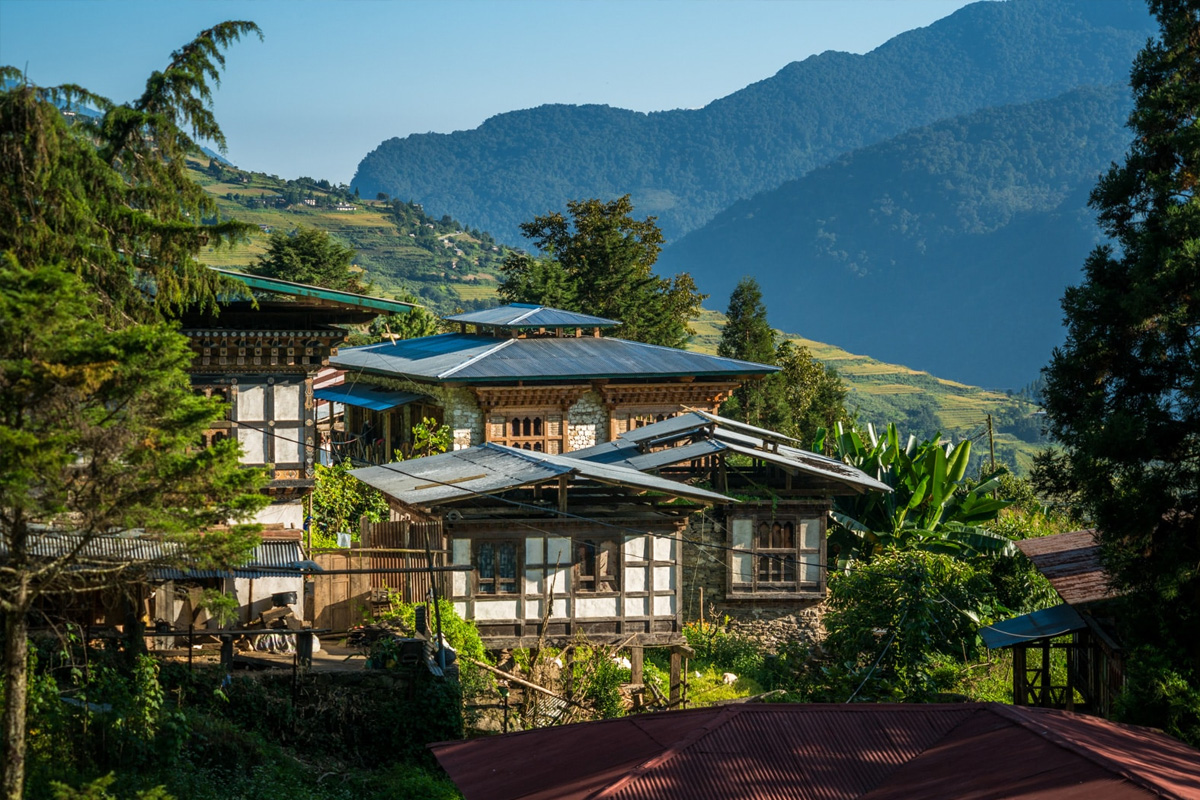
Normal Itinerary for Merak Sakteng Trek
Day 1: Paro Arrival (2,200 m) and Visit Historical Sites
Day 2: Domestic Flight to Bumthang (2,600 m).
Day 3: Bumthang Local Culture and History Tour
Day 4: Transfer to Trashigang (1,838 m)
Day 5: First Trekking Day – Chaling (2,100 m) to Donmong Chu (3,100 m)
Day 6: Second Trekking Day – Donmong Chu to Merak Village (4,350 m)
Day 7: Third Trekking Day – Merak to Miksa Teng (4,100 m)
Day 8: Fourth Trekking Day – Miksa Teng to Sakteng (4,100 m)
Day 9: Explore the Surrounding Area of Sakteng
Day 10: Final Trekking Day – Sakteng to Thakthi (Down to 2,000 m)
Day 11: Transfer to Bumthang from Trashigang (1,838 m)
Day 12: Bumthang to Paro Transfer by Car or Flight
Day 13: Hike to Taktsang (Tiger Nest) Monastery) (3,120 m)
Day 14: Bhutan Departure
Bhutan Bumdra Trek
The Bhutan Bumdra Trek is a short yet thrilling and spiritually enriching adventure that spans two days, taking trekkers through some of the most stunning landscapes and culturally significant sites in Bhutan. The trek begins at Sang Choekhor Village, situated at an altitude of 2,900 m.
The first day involves an ascent through ancient forests, offering breathtaking views of the Himalayan ranges. After approximately 12 kilometers (7.5 miles) of trekking, you reach the Bumdra Monastery, perched at around 3,900m. This secluded monastery, known as the "Hundred Thousand Fairies'' monastery, provides an idyllic setting for camping, with opportunities to witness a spectacular sunset over the mountains.

Whereas, on the second day, the trek descends towards the renowned Taktsang Monastery, commonly known as Tiger's Nest. This portion of the trek is about 8 kilometers (5 miles) and involves navigating downhill paths through lush landscapes. The highlight of this day is reaching the Zangdopelri Garden, offering a stunning vantage point of Taktsang Monastery before continuing to the monastery itself, which is dramatically perched on a cliffside. Overall, The Bhutan Bumdra Trek is moderately challenging Short Trek in Bhutan, requiring a good level of fitness due to the altitude and the steep ascents and descents.
Trip Facts
- Duration of Trek: 2 days
- Starting Point: Sang Choekhor Village (2,900m)
- Maximum Height: 3,900 m at Bumdrak Monastery
- Difficulty: Moderately challenging
- Best Season: Spring and autumn
Highlights of Bhutan Bumdra Trek
- Traverse scenic mountain paths leading to Bhutan's famous Tiger's Nest.
- Experience the tranquility and stunning sunset views at the "Hundred Thousand Fairies" monastery.
- Sightseeing tours to the major cultural and historical sites in Bhutan's capital and the former capital.
- Relax in a traditional Bhutanese hot stone bath, known for its therapeutic benefits.
- Enjoy a taste of traditional red rice beer, a unique local specialty.
- Don traditional Bhutanese clothing and capture memorable photos.
- Immerse in local culture with a traditional dance performance during dinner.
- Engage in Bhutan's national sport, archery, which is considered an art form.
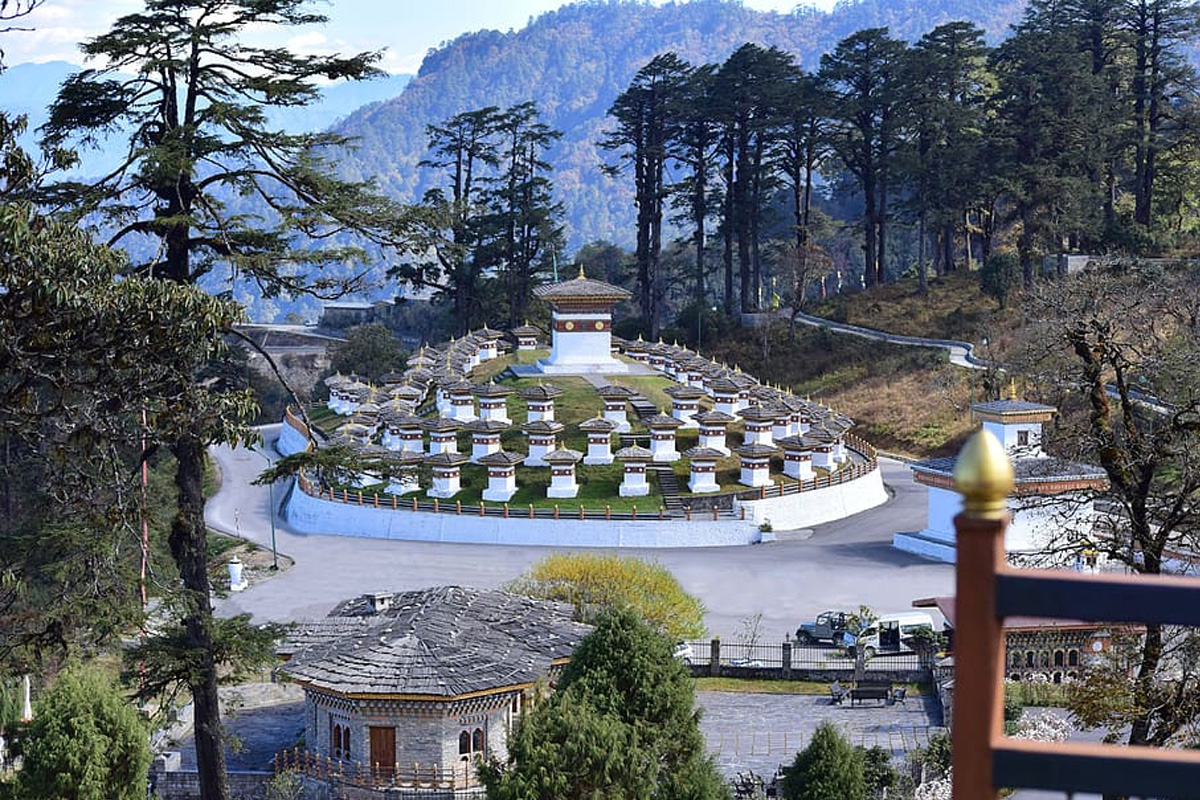
Normal Itinerary for Bhutan Bumdra Trek
Day 1: Paro Arrival and Transfer to Thimphu
Day 2: Thimphu to Punakha Round Sightseeing Tour
Day 3: First Hiking Day - Sang Choekhor to Bumdra
Day 4: Second Hiking Day – Bumdra to Taktsang
Day 5: Paro Departure
FAQs
What makes Bhutan a Popular Trekking Destination?
Bhutan's Popularity as a trekking destination lies in its untouched natural beauty, rich biodiversity, and vibrant cultural heritage. Trekking trails wind through pristine landscapes of towering mountains, lush forests, and remote villages, offering trekkers a unique opportunity to immerse themselves in Bhutanese culture while experiencing breathtaking scenery. The country's commitment to sustainable tourism, with policies emphasizing low-impact travel, ensures that its pristine environment remains preserved for generations to come. Also, here is a guide on Popular Tourist Attractions in Bhutan.
What are the best trekking routes for beginners in Bhutan?
Bhutan offers several trekking routes suitable for beginners, each showcasing the country's stunning landscapes and cultural landmarks. The Druk Path Trek, starting from Paro and ending in Thimphu, is a popular choice for its moderate difficulty level and panoramic views of the Himalayas. The Punakha Winter Trek, passing through rhododendron forests and picturesque villages, offers a gentle introduction to trekking in Bhutan. Similarly, the Gangtey Trek in the Phobjikha Valley provides a serene trekking experience amidst pristine nature and rural life.
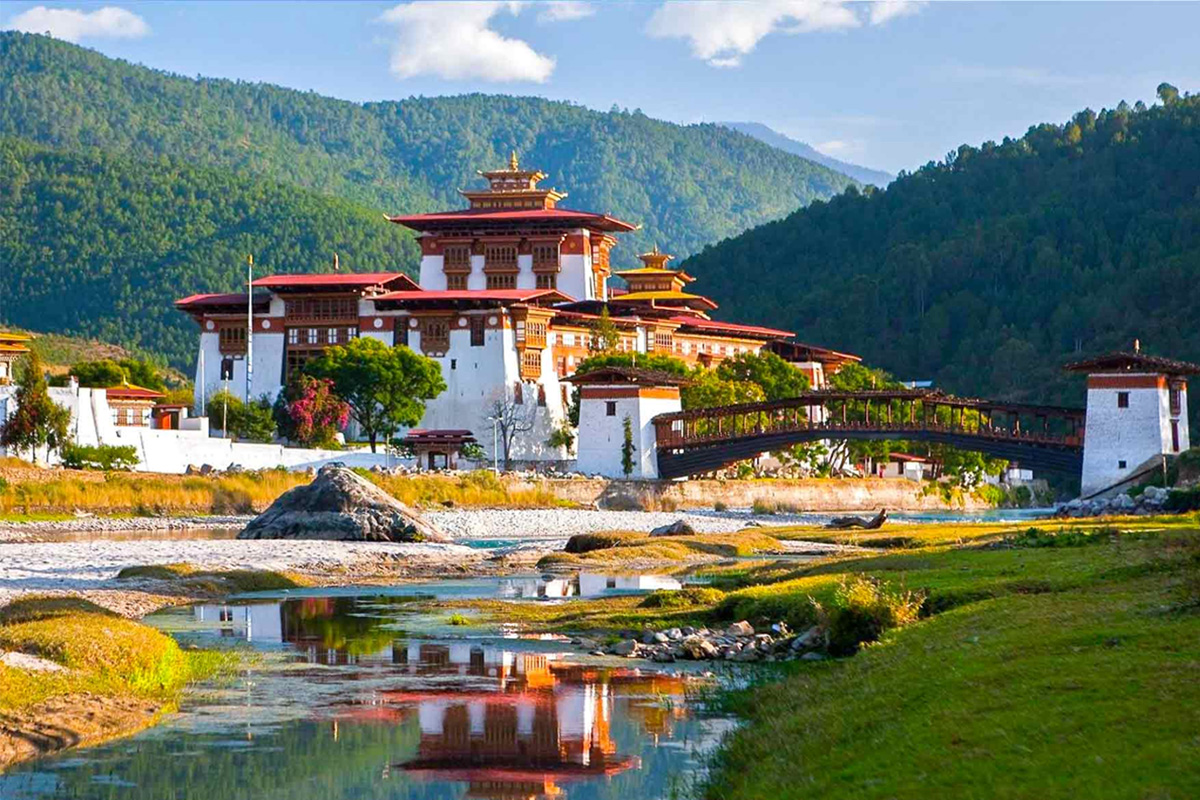
Do I need special permits for trekking in Bhutan?
Yes, trekking in Bhutan requires special permits issued by the Tourism Council of Bhutan (TCB) and arranged through licensed tour operators. These permits are essential to ensure compliance with Bhutanese regulations and to maintain the country's commitment to sustainable tourism practices. Additionally, trekkers must be accompanied by certified guides at all times during their trekking expedition.
How difficult is it to trek in Bhutan?
Trekking difficulty in Bhutan varies depending on the chosen route and individual fitness levels. While some treks are relatively easy and suitable for beginners, others can be more challenging, involving steep ascents, high altitudes, and rugged terrain. Trekkers should choose routes that match their fitness level and experience, and be prepared for moderate to strenuous physical exertion, especially on longer treks or those reaching higher elevations.
When is the best time for trekking in Bhutan?
The best time for trekking in Bhutan is during the spring (March to May) and autumn (September to November) seasons. During these months, the weather is generally mild and stable, with clear skies and comfortable temperatures conducive to trekking. Spring brings vibrant blooms of rhododendrons and other wildflowers, while autumn offers stunning views of the Himalayan peaks and colorful foliage, enhancing the trekking experience.
Is altitude sickness a concern during trekking in Bhutan?
Yes, altitude sickness can be a concern during trekking in Bhutan, especially on routes that involve high altitudes. It's essential to acclimatize gradually, stay hydrated, and listen to your body's signals to prevent altitude-related illnesses.
Can I Trek solo in Bhutan?
No, trekking solo in Bhutan is not permitted. According to Bhutanese regulations, all trekkers must be accompanied by certified guides approved by the Tourism Council of Bhutan (TCB). This requirement ensures the safety and well-being of trekkers while also supporting the local tourism industry. Certified guides provide valuable assistance, including navigation, cultural insights, and emergency response, enhancing the overall trekking experience.

What are the accommodation options on trekking trails in Bhutan?
Accommodation options on trekking trails in Bhutan typically include camping in tents or staying in basic lodges and guesthouses along the route. These accommodations provide essential amenities such as shelter, meals, and sometimes even hot showers.
How does the trek in Bhutan compare to treks in Nepal?
Both Bhutan and Nepal offer spectacular trekking experiences, but there are some differences. Bhutan's treks are known for their pristine environment, cultural immersion, and strict tourism regulations, whereas Nepal's treks are renowned for their dramatic mountain scenery, high-altitude challenges, and a wide range of trekking routes catering to various difficulty levels.
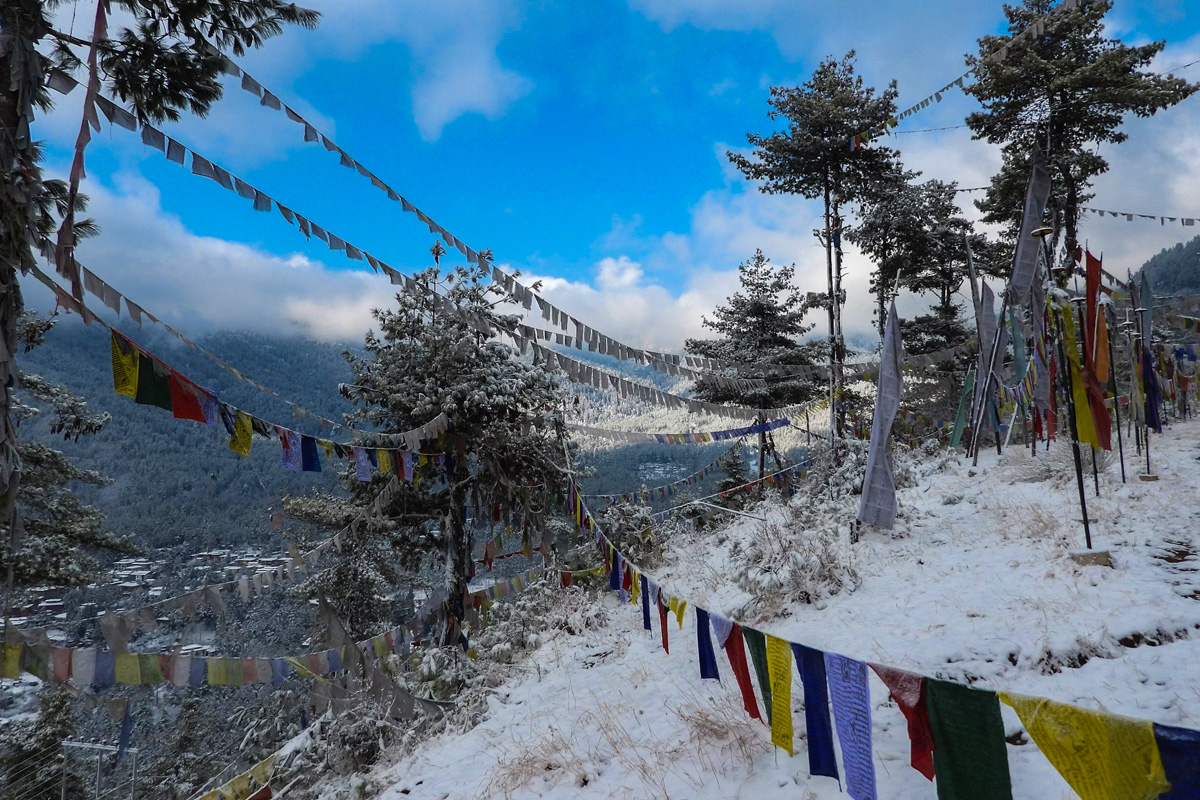
How much does it cost to trek in Bhutan?
The cost of trekking in Bhutan varies depending on factors such as the duration of the trek, the number of trekkers in the group, the chosen route, and the services provided by the tour operator.
Generally, trekking in Bhutan tends to be more expensive compared to other destinations due to the country's policy of high-value, low-impact tourism. Prices typically include trekking permits, guide fees, accommodation, meals, and transportation.




















